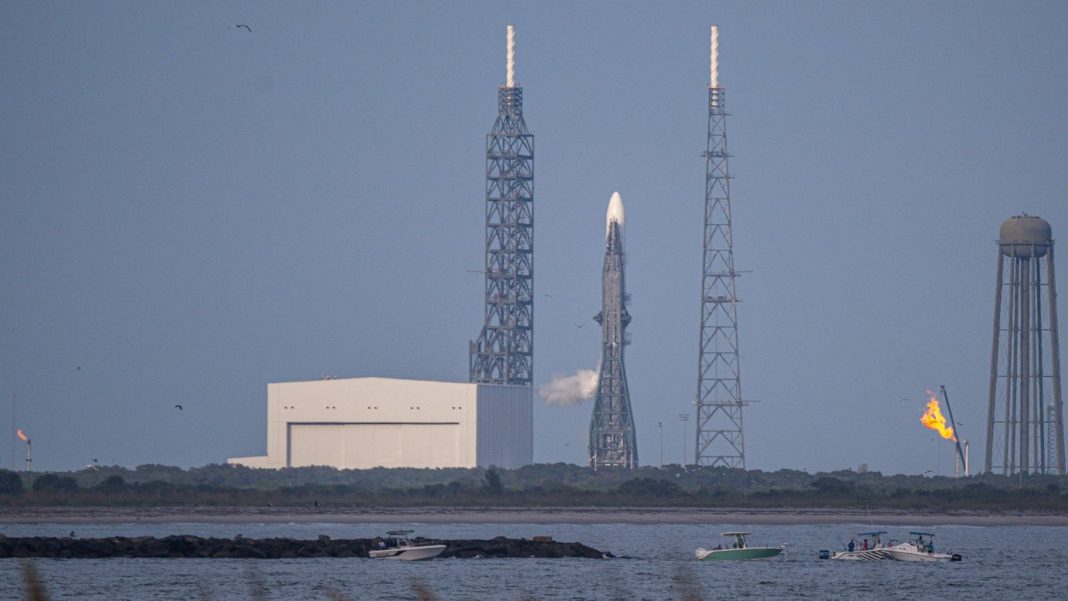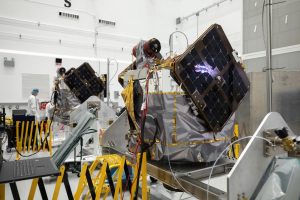Jeff Bezos’ Blue Origin Aims for Mars in Crucial New Glenn Rocket Test
Key Takeaways:
- Blue Origin’s New Glenn rocket is set for its first major test launch, carrying NASA’s Escapade Mars satellites
- The mission marks New Glenn’s first flight with a customer payload after January’s demonstration flight
- Blue Origin will attempt to recover and land the rocket’s first-stage booster for reuse
- Escapade satellites will study Mars’ atmosphere and radiation conditions starting September 2027
Blue Origin, Jeff Bezos’ space company, is preparing for a critical test of its massive New Glenn rocket, scheduled to launch NASA’s Escapade mission to Mars. This represents the rocket’s first major operational flight with customer payloads onboard.
The launch window opens Thursday from 2:57 to 4:25 p.m. ET at Cape Canaveral Space Force Station. Blue Origin will stream the event live approximately 20 minutes before liftoff.
Overcoming Launch Delays
Previous launch attempts faced multiple obstacles. Sunday’s scheduled launch was postponed due to cloud cover, while Wednesday’s attempt was canceled because of a massive solar storm that created auroras but posed radiation risks to spacecraft.
The company also navigated FAA restrictions on daylight launches during the government shutdown to secure this new launch opportunity.
Booster Recovery Focus
Blue Origin will attempt to land New Glenn’s first-stage booster on the sea barge Jacklyn, a crucial step for the company’s reusable rocket strategy. During January’s inaugural flight, booster landing failed when engines didn’t reignite properly.
While mission success primarily depends on payload delivery, booster recovery remains essential to Blue Origin’s cost-reduction business model. The company spent 10 months refining New Glenn specifically to improve landing success.
Mars Mission Strategy
After reaching orbit, New Glenn will deploy the twin Escapade satellites toward Lagrange Point 2 (L2), a gravitational balance point 1.5 million kilometers from Earth. The satellites will wait at L2 until the 2026 Mars transfer window opens, then swing by Earth before their final journey to the Red Planet.
Both spacecraft will enter Martian orbit in September 2027, regardless of their exact launch date.
Scientific Objectives
Led by UC Berkeley researchers, Escapade will study why Mars lost its dense atmosphere billions of years ago and assess radiation conditions for future human exploration.
“Throughout the Escapade mission, the two satellites will take simultaneous measurements from nearly the planet’s entire upper atmosphere and magnetosphere, ranging from altitudes between approximately 100 and 6,200 miles (160 and 10,000 kilometers),” according to a UC Berkeley news release about the mission. “Coordinated, multipoint observations are necessary to … unravel the chain of cause and effect within the system.”
Budget-Friendly Exploration
Escapade is part of NASA’s SIMPLEx program, which focuses on low-cost planetary science missions. At under $100 million, it represents significant savings compared to other Mars orbiters costing $300-600 million.
This cost-effective approach demonstrates how smaller, innovative spacecraft can advance planetary exploration while maintaining scientific value.





